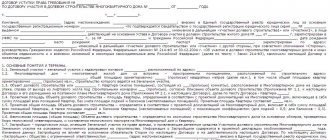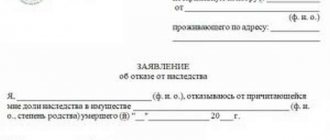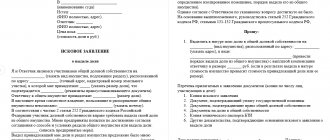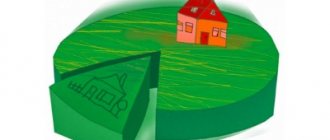Percents and Fractions
To make it clearer, consider the relationship between percentages and fractions (regular and decimal):
1. One percent is equal to one part in one hundred, in other words, the fraction 1/100. 1% = 1 / 100 = 0.01
2. 10 percent is equal to the 10th part of a hundred, i.e. the fraction 10/100. 10% = 10 / 100 = 0.1
3. 50 percent is equal to the fraction 50/100. 50% = 50 / 100 = 0.5
4. 100 percent is equal to 100/100 or one. 100% = 100 / 100 = 1
5. 110 percent corresponds to the fraction 110/100. 110% = 110 / 100 = 1.1
How to convert percentages to shares
When solving economic and statistical problems, it is often necessary to convert percentages into shares. After all, percentages themselves are fractions, but fixed (hundredths) fractions. In most cases, such a translation does not cause difficulties - you just need to carefully monitor the correctness of the calculations.
You will need To convert interest into shares, you must first clarify: into what shares you want to convert them. In thousandths, tenths, fifths, thirds, etc. Let's say the percentages need to be converted into nth shares. To do this, use the following formula: Kd = K% x n / 100, where: Kd is the number of shares, K% is the number of percent, n is the “size” of shares (for thirds – n=3, for tenths – n=10, etc. .P.).
For example, let it be known that the concentration of the solution is 2%. It is required to determine: what will be the concentration of this solution in thousandths (ppm). Using the above formula, we get 2 x 1000 / 100 = 20. That is, the concentration of a 2% solution, expressed in thousandths, will be equal to 20.
However, in practice, it is often difficult to clarify into which shares the interest should be converted. In this case, select the shares that are most suitable for the given situation. In this case, the amount of interest in each specific case should also be taken into account. It is better to consider such situations using typical examples.
Let, for example, a shareholder own 20% of the company's shares. It is necessary to find out what share of the enterprise he owns. Since 20% is 20/100, then by reducing this fraction we get 1/5. That is, in this case, based on the essence of the question and the amount of interest, the answer will be: “A fifth share.”
If the shareholder bought 51% of the company’s shares, then it will no longer be possible to reduce the percentage. Therefore (theoretically) the most correct answer to the above question would be “Fifty-one hundredths.” However, in this situation such an answer is not entirely appropriate. It would be more informative to decompose 51/100 into the sum: 50/100 + 1/100 = 1/2 + 1/100. Thus, the correct answer would be: “Half and one hundredth.”
If it is impossible to obtain acceptable shares, and the accuracy of the calculations is not critical, then slightly change the number of percentages. Let, for example, it is known that 77% of the company’s employees are family. The question is: what proportion of the total number of employees are family workers? Since 77/100 cannot be reduced, we will select a more suitable numerator. This is 75. 75/100=3/4. Thus, the correct (in this case) answer would be: “More than three-quarters” or “Three out of four.”
Percentage change (increase or decrease)
The percentage change from number X1 to number X2 is calculated by the formula:
Change (%) = (X2 – X1) * 100% / X1
If the result is positive, then we are dealing with an increase/increase.
Example:
The change from 50 to 70 is 40% (i.e. an increase). (70 – 50) / 50 * 100% = 20 / 50 * 100% = 40%
If the result is negative, then this is a percentage decrease.
Example:
The change from 80 to 50 is -37.5%. (50 – 80) / 80 * 100% = 30 / 80 * 100% = -37.5%
What to do with these percentages? Or how to convert % to grams and vice versa - number to percentage!
How to convert percentages to grams and vice versa
Hello friends!
I feel that there is an urgent need to highlight this burning and important topic for everyone who makes soap from scratch and homemade cosmetics (and also bakes bread and is engaged in other activities related to recipes)







